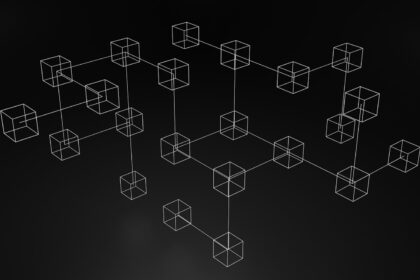Boosting the speed of data processing within decentralized ledgers demands expanding their capacity beyond current limitations. Layer 2 protocols and sharding techniques provide practical ways to increase the volume of operations each block can support, significantly reducing delays and congestion. These methods allow networks to validate multiple batches of activities simultaneously without compromising security.
Optimizing throughput involves balancing on-chain and off-chain mechanisms to maintain decentralization while improving efficiency. For instance, state channels enable parties to conduct numerous interactions privately before finalizing a single record on the main ledger. This approach minimizes resource use and accelerates confirmation times, enabling systems to handle higher loads effectively.
Adopting scalable architectures often requires integrating consensus algorithms designed for rapid finality and parallel processing capabilities. Solutions such as delegated proof-of-stake or asynchronous Byzantine fault tolerance can elevate transaction capacity by distributing workload across network participants more evenly. Implementing these technologies ensures that distributed networks remain responsive under increasing demand.
Blockchain scalability: handling more transactions
Increasing the capacity of distributed ledgers to process a higher volume of operations per second is critical for broader adoption and practical use cases. Current limitations in throughput often result from consensus mechanisms and block size constraints, which restrict the network’s ability to accept numerous operations simultaneously without latency or increased fees. Enhancing these parameters requires innovative approaches that preserve security and decentralization while boosting speed.
One primary method to expand operational capacity involves layer-two protocols such as state channels and sidechains. These solutions enable off-chain processing of multiple actions, bundling them before submitting a single consolidated record on the main network. For example, the Lightning Network on Bitcoin allows near-instantaneous micropayments by keeping most interactions off-chain, significantly improving speed without compromising trustlessness.
Technical strategies for increasing throughput
The use of sharding divides the ledger into smaller segments (shards), each capable of processing subsets of data concurrently. This parallelization multiplies effective throughput by distributing workload across nodes rather than requiring every participant to validate every operation. Ethereum 2.0 plans to implement this technique, promising dramatic improvements in capacity by enabling thousands of simultaneous verifications compared to current single-threaded execution.
Another approach involves adjusting block parameters such as increasing block size or reducing block intervals to allow more data inclusion per unit time. While this boosts speed and operational density, it can introduce risks like centralization pressure due to higher hardware demands on validators or miners. For instance, Bitcoin Cash opted for larger blocks aiming at faster confirmation times but faced debates about trade-offs between decentralization and performance.
Certain consensus algorithms also impact throughput; proof-of-stake (PoS) systems generally offer faster finality compared to proof-of-work (PoW) due to reduced computational requirements and quicker agreement among validators. Networks like Solana leverage unique hybrid mechanisms combining PoS with Proof-of-History timestamps, achieving tens of thousands of operations per second under optimal conditions–demonstrating how protocol design directly influences transactional capacity.
Ultimately, integrating multiple complementary solutions often yields the best results in expanding ledger capability. Combining layer-two enhancements with sharding and efficient consensus models creates a multi-layer architecture that balances high-speed processing with robust security guarantees. Careful implementation ensures users experience both swift confirmation times and reliable verification, fostering confidence in decentralized applications’ usability across diverse scenarios.
Layer 1 scaling solutions
Increasing the base protocol’s capacity is a direct method to improve the system’s ability to process a higher volume of operations per second. Layer 1 enhancements focus on modifying consensus algorithms, block size, or data structures to raise throughput without relying on secondary frameworks. These adjustments aim to optimize the core network’s speed and efficiency, thereby supporting a greater load of user activities simultaneously.
For instance, increasing block size allows more data packets to be included in each cycle, effectively raising the number of processed actions within a given timeframe. Ethereum’s transition from Proof-of-Work (PoW) to Proof-of-Stake (PoS) with Ethereum 2.0 exemplifies this approach by improving confirmation times and reducing latency while maintaining decentralization and security standards.
Technical approaches and examples
One common technique involves sharding–partitioning the main ledger into smaller segments that operate concurrently. This segmentation divides workload across multiple parallel chains, enhancing the total throughput without overburdening any single node. Projects like Polkadot leverage parachains as independent shards connected through a relay chain, allowing simultaneous processing of numerous instructions and expanding overall network capacity.
Another notable advancement is introducing alternative consensus mechanisms such as Delegated Proof-of-Stake (DPoS), which reduces computational overhead by delegating validation rights to selected nodes. Networks like EOS utilize DPoS to achieve faster finality and increased transaction speed compared to traditional PoW models. This shift enhances operational efficiency while preserving network integrity.
The implementation of novel data structures also contributes significantly. Directed Acyclic Graphs (DAGs), used by platforms like IOTA, replace linear block formation with graph-based architectures, enabling asynchronous confirmations and parallel validations. This structural innovation supports heightened scalability by minimizing bottlenecks inherent in sequential processing environments.
A critical consideration when boosting native protocol throughput is balancing resource requirements against decentralization principles. Larger blocks or faster cycles demand improved hardware capabilities from participants, potentially concentrating control among fewer operators. Careful parameter tuning is essential to avoid undermining security or openness while pursuing elevated performance metrics.
The choice of foundational upgrades depends heavily on intended application scenarios and user expectations regarding confirmation times and cost efficiency. For users prioritizing rapid micro-payments with minimal fees, DAG-based ledgers might offer superior utility whereas enterprises requiring robust audit trails may favor sharded PoS systems for their combined capacity and trustworthiness features.
Layer 2 Transaction Channels
To increase the throughput of decentralized networks, Layer 2 transaction channels offer a practical solution by offloading operations from the main ledger. These channels enable participants to conduct numerous exchanges off-chain while only submitting minimal information on-chain to finalize and secure the results. This approach effectively expands capacity without compromising security, allowing for greater speed in processing micro-payments or frequent interactions.
One widely adopted example is the Lightning Network on Bitcoin, which establishes payment channels between users. By opening a channel with an initial on-chain transaction, parties can exchange countless signed transactions privately. Only when closing the channel is the net outcome recorded on the primary ledger, reducing congestion and increasing overall network capacity significantly.
Technical Mechanisms and Advantages
Layer 2 channels rely on multi-signature wallets and smart contract scripts to enforce rules off-chain. Each participant maintains control over funds until mutual agreement or dispute resolution triggers settlement on the base layer. This design decreases confirmation times drastically because most interactions do not require global consensus, thus improving operational speed. Additionally, these solutions reduce fees by limiting costly base-layer writes.
From a scalability perspective, such off-chain frameworks multiply transactional throughput exponentially compared to direct ledger entries. For instance, research indicates that state channels can handle thousands of interactions per second versus a dozen on legacy systems. However, effective implementation requires careful management of channel states and user availability to avoid locking up funds unnecessarily.
Sharding for Throughput Increase
Sharding divides a distributed ledger into smaller, manageable segments called shards, each processing a subset of operations independently. This approach significantly enhances throughput by enabling parallel processing, allowing the system to accommodate a larger volume of operations simultaneously without compromising consensus integrity.
The architecture increases speed and capacity by distributing workload across multiple shards. Each shard executes its own set of operations and maintains a partial state, reducing the bottleneck caused by sequential validation on a single chain. This method effectively multiplies the network’s ability to process concurrent activities.
Technical Implementation and Benefits
In practice, sharding involves partitioning data structures such as accounts or smart contracts so that different nodes validate distinct portions of the ledger. For example, Ethereum 2.0 employs data sharding alongside beacon chains to coordinate cross-shard communication securely. By isolating transaction sets within shards, it achieves higher throughput while retaining decentralization.
Key advantages include increased capacity without exponentially raising hardware requirements per node. Nodes only need to store and verify information relevant to their shard rather than the entire dataset. This reduces storage demands and bandwidth usage, promoting wider participation from less resource-intensive operators.
- Parallel Execution: Multiple shards process operations concurrently.
- Resource Efficiency: Nodes handle smaller subsets of data.
- Improved Scalability: Network adapts better under growing demand.
However, cross-shard communication introduces complexity in synchronizing state changes between shards. Solutions like asynchronous messaging protocols and atomic cross-shard transactions mitigate risks such as double-spending or inconsistent state updates. Notably, projects like Zilliqa demonstrate practical throughput gains by applying network-level sharding combined with consensus optimization.
In summary, sharding represents one of the most promising solutions for expanding transactional capacity while maintaining system security and decentralization principles. Understanding its mechanics helps grasp how modern networks evolve to support increasingly complex applications with heightened performance requirements.
Consensus Algorithms Impact
The choice of consensus protocol directly influences a distributed ledger’s ability to increase its throughput and overall capacity. For instance, Proof of Work (PoW), widely used in early designs, tends to limit speed due to its computational intensity and block confirmation times averaging around 10 minutes. This inherently restricts the network’s ability to process a large number of operations per second, creating bottlenecks when demand surges.
Alternatively, consensus mechanisms like Proof of Stake (PoS) improve operational velocity by reducing energy consumption and latency during validation. Networks utilizing PoS variants demonstrate enhanced efficiency, often supporting hundreds or even thousands of operations within a single second. This advancement substantially elevates transactional throughput without compromising decentralization principles.
Technical Comparisons and Practical Implications
Delegated Byzantine Fault Tolerance (dBFT) and Practical Byzantine Fault Tolerance (PBFT) protocols offer compelling models for increasing capacity through rapid finality. These methods reduce confirmation delays by relying on a fixed set of validators that reach agreement quickly, making them suitable for permissioned environments requiring high-speed processing. For example, NEO’s dBFT enables handling over 1,000 actions per second under optimal conditions–significantly outperforming traditional PoW chains.
Layer-2 solutions also highlight the impact of consensus adjustments on scalability. Technologies such as rollups or state channels offload operations from the base layer while maintaining security guarantees via smart contract-based checkpoints. These approaches effectively multiply network capacity by aggregating multiple activities off-chain before settling final states back on the primary ledger, dramatically boosting throughput without altering core protocols.
A balanced evaluation between security trade-offs and performance gains is essential when selecting consensus algorithms for expanding system throughput. While faster protocols may introduce some centralization risks or validator reliance, they enable networks to accommodate growing demands efficiently. Carefully designed hybrid systems combining multiple consensus styles often yield optimal results in scaling efforts aimed at maintaining robust decentralization alongside increased transactional capability.
On-chain vs Off-chain Trade-offs: A Technical Conclusion
For systems aiming to increase capacity and throughput, combining on-ledger and off-ledger approaches provides the most balanced path forward. On-ledger methods ensure finality and security but face inherent speed limits due to consensus overhead, while off-ledger techniques like state channels or sidechains dramatically boost processing rates by handling interactions outside the main network.
Optimizing performance means recognizing that neither approach alone fully satisfies demands for rapid confirmation and broad participation. For instance, Layer 2 rollups compress hundreds of operations into single on-ledger commitments, multiplying effective throughput without sacrificing decentralization. Meanwhile, sharding partitions data sets to expand base-layer capacity, illustrating how structural design enhances scalability metrics.
Key Technical Insights and Future Directions
- Latency vs Finality: Off-ledger solutions offer near-instantaneous execution but delay trust guarantees until settlement occurs on the primary chain.
- Security Trade-offs: Increasing throughput off-chain requires robust fraud proofs or optimistic verification schemes to mitigate risks associated with reduced direct validation.
- Resource Allocation: On-ledger scaling demands substantial computational power and storage growth, constraining speed improvements without innovative protocol upgrades.
- Interoperability: Seamless communication between layers enhances user experience by transparently balancing load across networks with different performance profiles.
The evolution of these hybrid architectures will shape ecosystem dynamics by enabling applications to select tailored configurations based on use case priorities–whether favoring instant responsiveness or maximal security. Anticipated advancements in cryptographic primitives, such as zk-proofs for succinct validity checks, promise further compression of data footprints and acceleration of settlement times.
Ultimately, addressing throughput limitations demands a layered strategy that leverages both immediate transaction processing off-main ledger and enduring consensus mechanisms on it. This duality unlocks practical capacity expansions while preserving trust assumptions integral to decentralized systems’ integrity. The trajectory points toward increasingly modular designs where adaptable balances between speed and assurance empower diverse stakeholders in emerging distributed economies.





